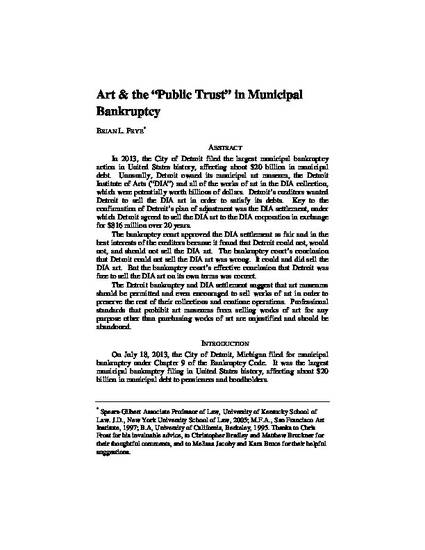
In 2013, the City of Detroit filed the largest municipal bankruptcy action in United States history, affecting about $20 billion in municipal debt. Unusually, Detroit owned its municipal art museum, the Detroit Institute of Arts (“DIA”) and all of the works of art in the DIA collection, which were potentially worth billions of dollars. Detroit’s creditors wanted Detroit to sell the DIA art in order to satisfy its debts. Key to the confirmation of Detroit’s plan of adjustment was the DIA settlement, under which Detroit agreed to sell the DIA art to the DIA corporation in exchange for $816 million over 20 years.
The bankruptcy court approved the DIA settlement as fair and in the best interests of the creditors because it found that Detroit could not, would not, and should not sell the DIA art. The bankruptcy court’s conclusion that Detroit could not sell the DIA art was wrong. It could and did sell the DIA art. But the bankruptcy court’s effective conclusion that Detroit was free to sell the DIA art on its own terms was correct.
The Detroit bankruptcy and DIA settlement suggest that art museums should be permitted and even encouraged to sell works of art in order to preserve the rest of their collections and continue operations. Professional standards that prohibit art museums from selling works of art for any purpose other than purchasing works of art are unjustified and should be abandoned.
Available at: http://works.bepress.com/brian_l_frye/24/

Brian L. Frye, Art & the “Public Trust” in Municipal Bankruptcy, 93 U. Det. Mercy L. Rev. 629 (2016).